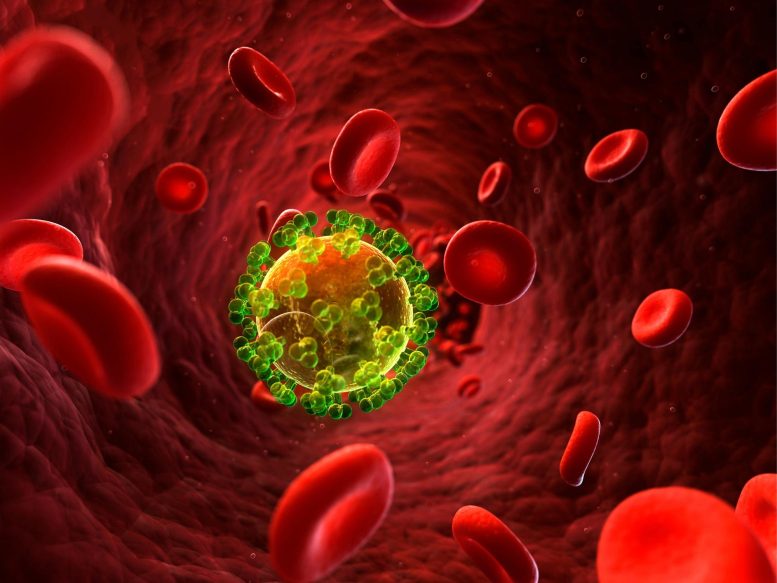Selon des chercheurs, une variante hautement virulente du VIH-1 circule aux Pays-Bas depuis quelques décennies.
Selon la nouvelle étude, un groupe de plus de 100 personnes infectées par ce sous-type a présenté des charges virales exceptionnellement élevées, un déclin rapide des cellules T CD4 et une infectivité accrue. Bien que les résultats montrent que la lignée de VIH est probablement apparue de novo au tournant du millénaire, les modifications importantes apportées à son génome rendent difficile de discerner les mécanismes qui sous-tendent sa virulence élevée.
La surveillance de la virulence du VIH est une entreprise importante, car environ 38 millions de personnes vivent actuellement avec le virus. Cependant, en dehors des études récentes sur le SARS-CoV-2 variants, an understanding of the evolution of virulence in viruses beyond theoretical analyses is lacking.
Within the ongoing BEEHIVE (Bridging the Epidemiology and Evolution of HIV in Europe) project, Chris Wymant and colleagues identified more than 100 individuals with a distinct strain of subtype-B HIV-1 – the “VB variant” – which was characterized by high viral loads and nearly double the rate of CD4 cell decline compared to individuals with other subtype-B HIV strains.
According to Wymant et al., by the time these individuals were diagnosed, they were vulnerable to developing AIDS within 2 to 3 years. Further analysis of the VB variant showed significant changes across the genome affecting almost 300 amino acids, which make understanding why this particular variant is so virulent difficult.
“Observing the emergence of more virulent and transmissible HIV is not a public health crisis,” writes Joel Wertheim in an accompanying Perspective, which discusses how and why viruses’ virulence evolves. “Let us not forget the overreaction of the claim of “Super AIDS” in 2005, when alarm was raised over a rapidly progressing, multidrug-resistant HIV infection found in New York that was ultimately restricted to a single individual.”
Wertheim ends the Perspective by discussing how the findings of the study by Wymant and colleagues are relevant to the COVID-19 pandemic, and the evolution of virulence in SARS-CoV-2.
For more on this research, see Highly Virulent and Destructive New HIV Variant Discovered in the Netherlands.
Reference: “A highly virulent variant of HIV-1 circulating in the Netherlands” by Chris Wymant, Daniela Bezemer, François Blanquart, Luca Ferretti, Astrid Gall, Matthew Hall, Tanya Golubchik, Margreet Bakker, Swee Hoe Ong, Lele Zhao, David Bonsall, Mariateresa de Cesare, George Mac, Intyre-Cockett, Lucie Abeler-Dörner, Jan Albert, Norbert Bannert, Jacques Fellay, M. Kate Grabowski, Barbara Gunsenheimer-Bartmeyer, Huldrych F. Günthard, Pia Kivelä, Roger D. Kouyos, Oliver Laeyendecker, Laurence Meyer, Kholoud Porter, Matti Ristola, Ard van Sighem, Ben Berkhout, Paul Kellam, Marion Cornelissen, Peter Reiss, Christophe Fraser, the Netherlands ATHENA HIV Observational Cohort and the BEEHIVE Collaboration, 3 February 2022, Science.
DOI: 10.1126/science.abk1688




